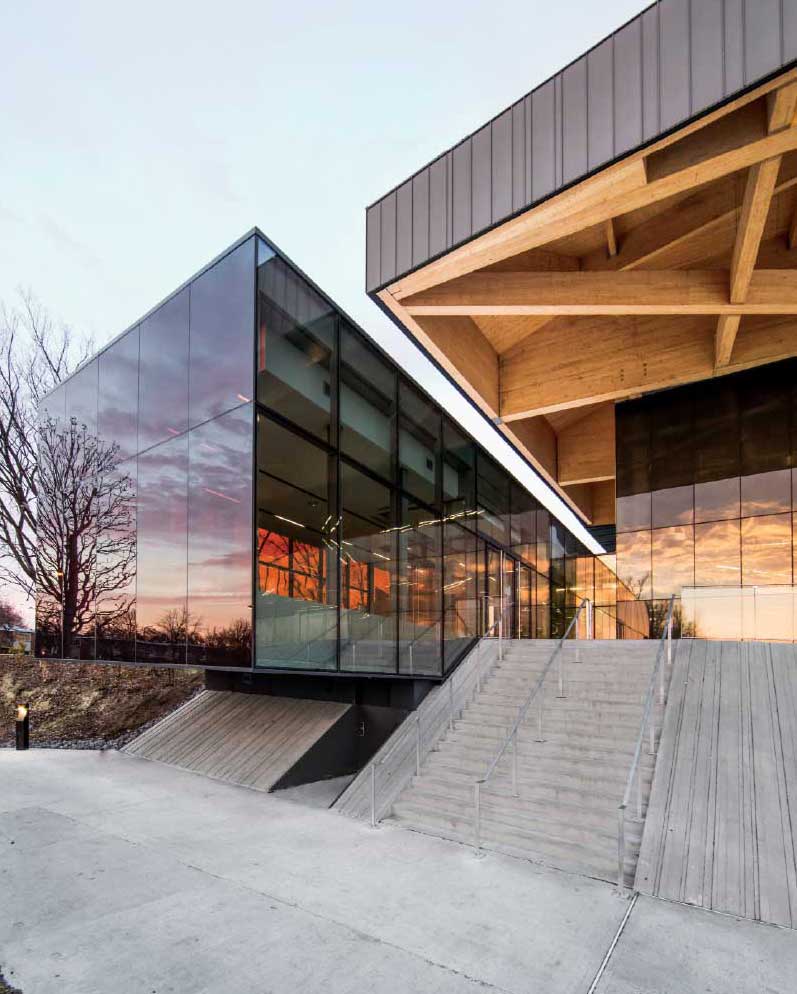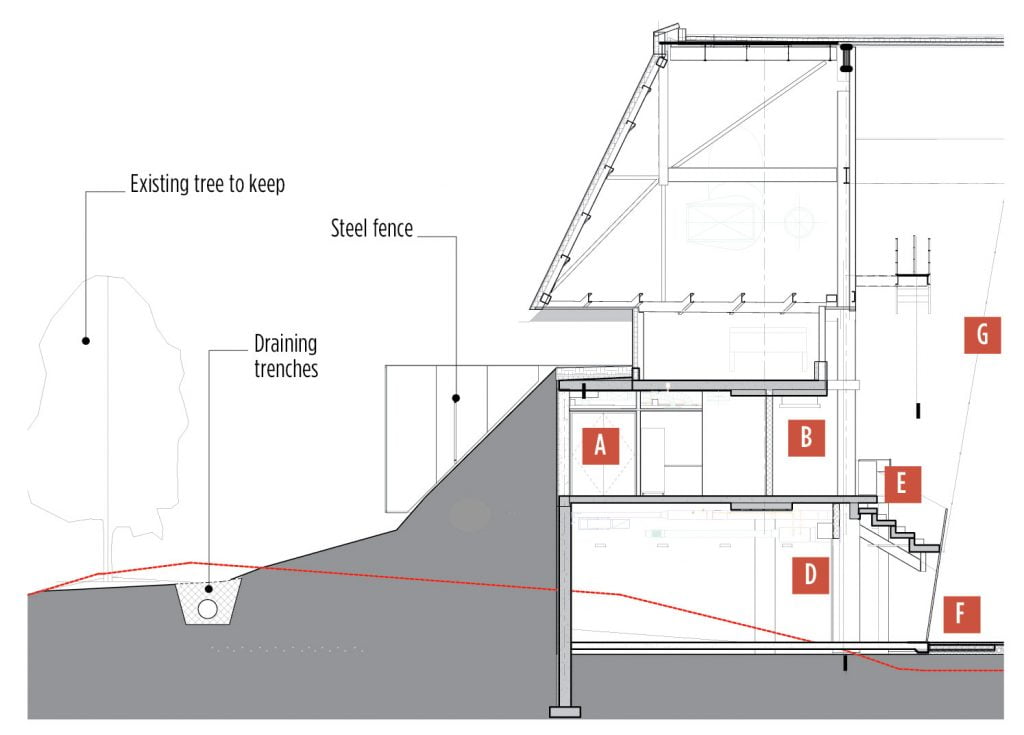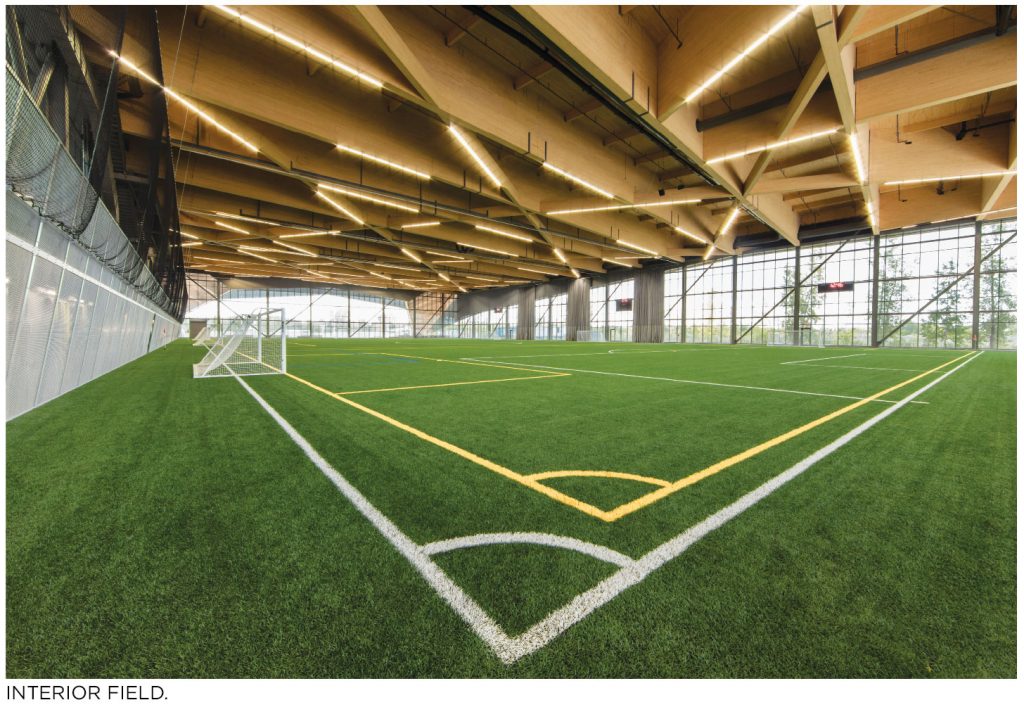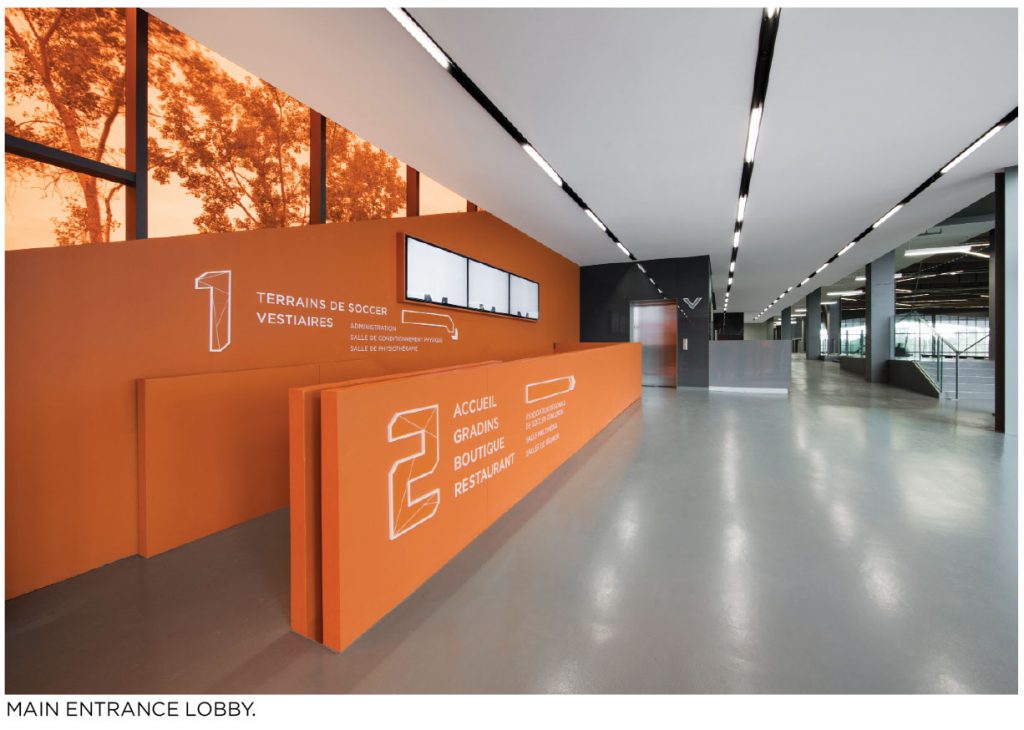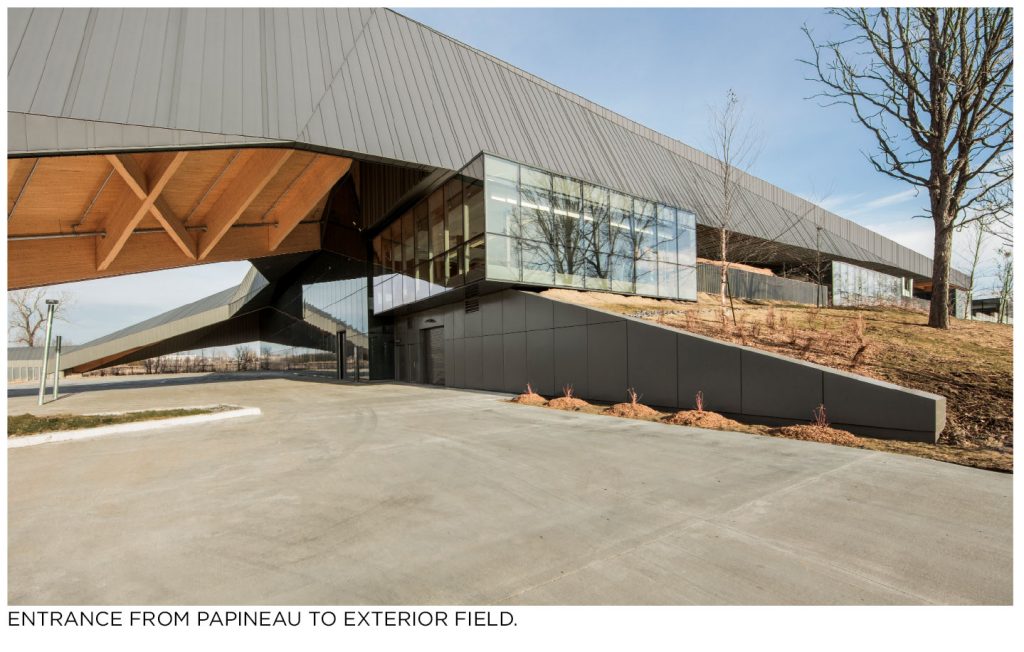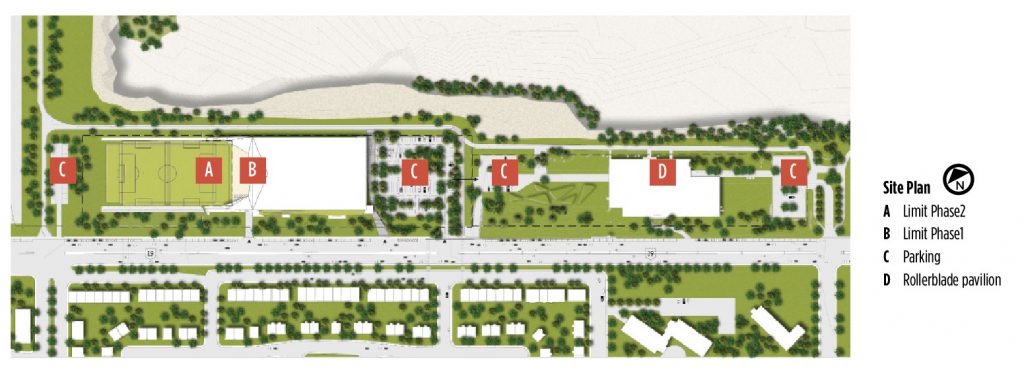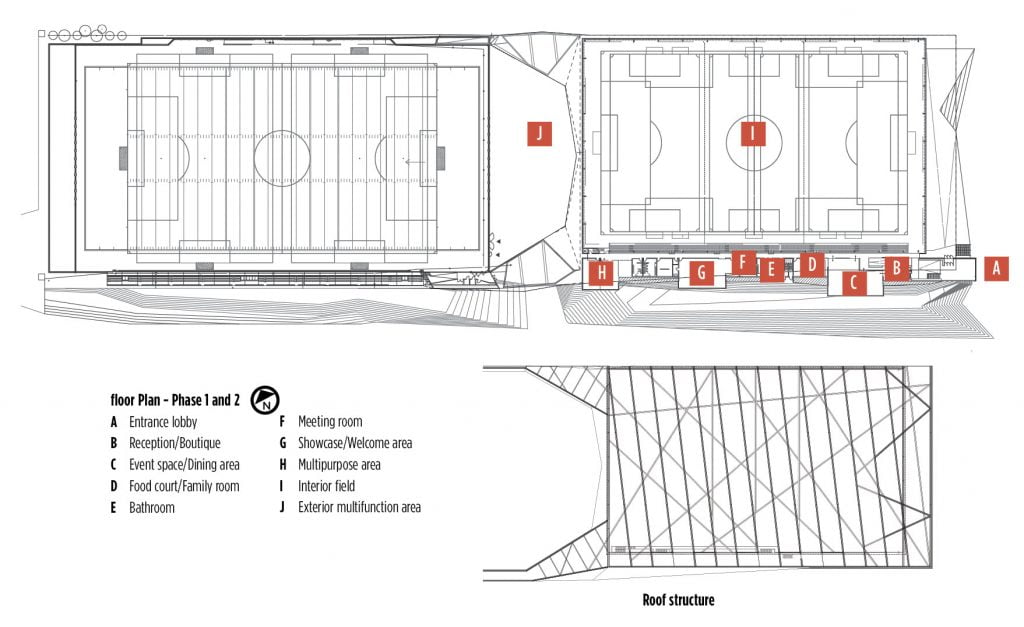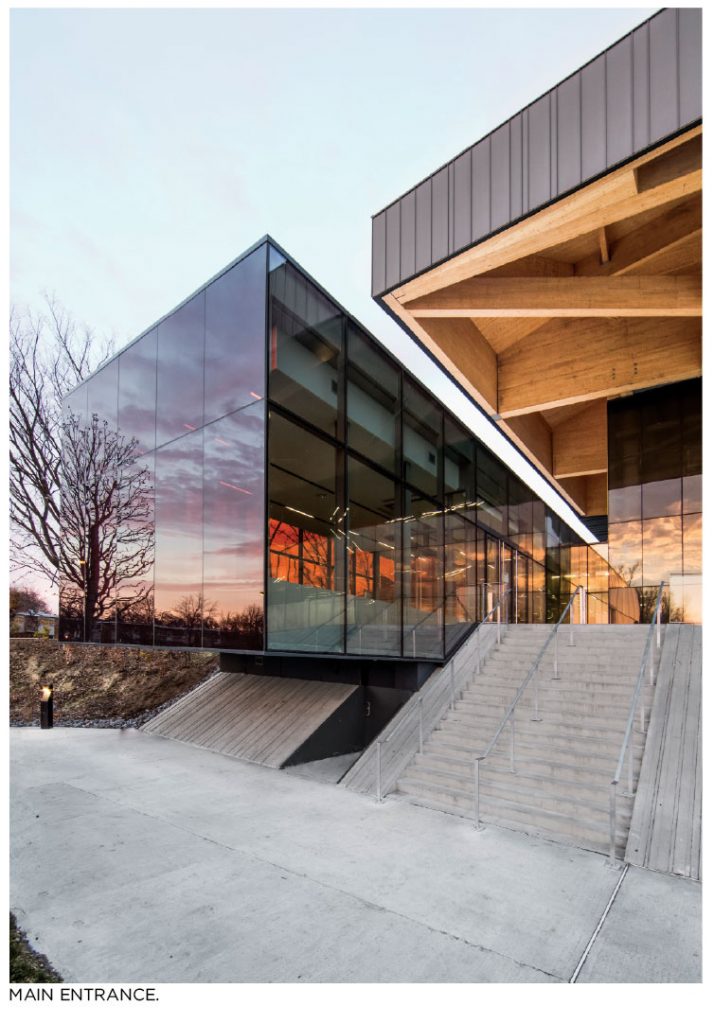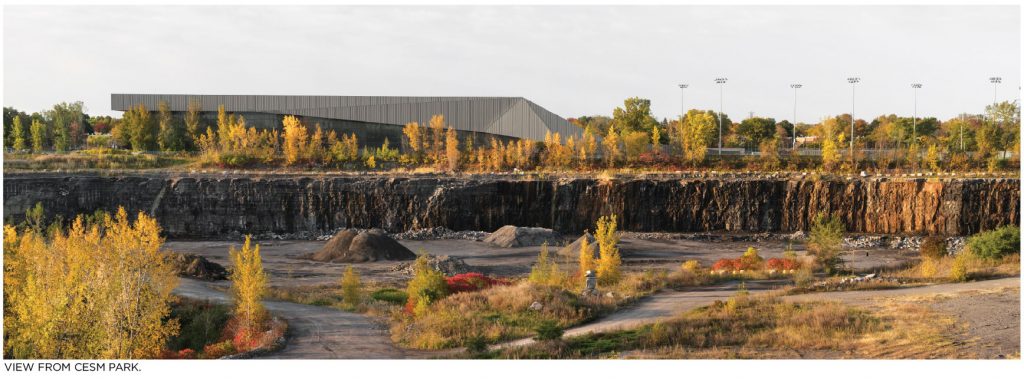Dramatic neighbourhood stadium pursues ecological restoration and high embodied energy
The land now occupied by the St-Michel Environmental Complex has a long history of human intervention: being used first as a mining centre, then as a dumping site.
The impacts have been both ecological and symbolic, with environmental neglect translating into negative public perception. Today, in an era of rehabilitation and regeneration, this location is now destined to become one of Montreal’s biggest parks with a focus on the environment and ecological restoration.
By Gilles Saucier
Central to this vision is the new indoor soccer stadium, which emerges from the park’s topography like a mineral stratum, recalling the geological nature of the site. The mineral stratum is articulated by a continuous roof which cantilevers over the entry plaza and folds down over the interior soccer field then extends to the ground to become the spectator seating for the outdoor field. In this way, the form of the roof responds to the requirements of the program and enables the interior soccer centre to become the exterior open-air stadium.
The immense size of the park called for an architectural intervention of grand scale, a truly unique gesture in the city. In order to ensure the formal unity of the project, the design was developed from the transformation of a single element – the roof – constructed from cross laminated timber [CLT]. The structural grid forms a layered mesh, which appears to be random at first sight, but in fact responds with more closely spaced members where greater structural strength is required.
long Papineau Avenue, and existing berm is used to shelter the various service spaces that support the activity areas. This integration accommodates an elevated pedestrian path as well as preserving the existing trees. From this fusion of building and landscape a series of crystal-like windows project toward the street, providing daylight and views for the administrative and public spaces behind. At the southeast end, a large crystalline box emerges, signalling the entrance of the soccer centre. Despite the large scale of the main program components, these luminous elements and preserved vegetation give the architecture a critical human scale that respects the residential neighbourhood it faces. The transparency of the building also promotes a sense of openness.
The programmatic elements are organized efficiently by taking advantage of the linearity of the site, as well as considering the program associations and usages of players, spectators and park visitors. The program is arranged on two levels. Each level is organized using a main circulation corridor that links the interior to the exterior.
On the public entrance level, the corridor is continuous from the plaza entry, through the lobby and central programmatic spaces, permitting access directly to the stands.
PROJECT CREDITS
Client City of Montreal
Architects Saucier+Perrotte architectes / HCMA architects
Gilles Saucier (Lead Design Architect), André Perrotte (Principal-in-Charge), Darryl Condon, Trevor Davies, Michael Henderson, Lia Ruccolo, Patrice Bégin, Charles-Alexandre Dubois, Leslie Lok, David Moreaux, Yutaro Minagawa, Vedanta Balbahadur, Marc-André Tratch, Nick Worth.
General contractor Entreprise de construction T.E.Q. inc.
Structural and Civil Engineers NCK Inc.
Mechanical and Electrical Engineers Bouthillette Parizeau
LEED Consultant Synairgis
Wood Structure Nordic Structures
Landscape Architect WAA Inc.
Photos Olivier Blouin
Drawings Saucier + Perrotte architectes / HCMA architects
VOLUME OF WOOD USED:
– Glulam: 2,500m3; CLT: 1,625m3
– Wood sequesters approximately 0.9 tonnes per cubic metre, which equates to about 3,700 tonnes of sequestered carbon.
As a point of reference, the annual GHG emissions in Canada are around 20 tonnes per capita. [Conference Board of Canada 2010].
Gilles Saucier, lead design architect, Saucier+Perrotte architectes / HCMA architects.

